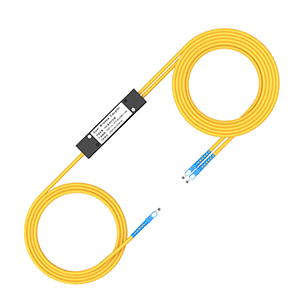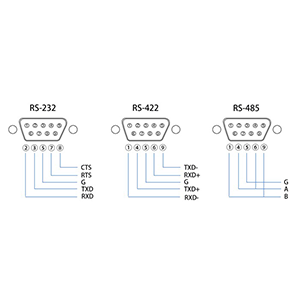Optical amplification technology plays an important role in optical communications. This article will explore the main applications of Raman amplifiers. We will first explain the physical mechanism of Raman amplification and explain its advantages over other amplification methods. Next, we will deeply analyze the main application scenarios of Raman amplifiers in the field of optical communications, including long-distance optical fiber transmission, wavelength division multiplexing optical communication systems, high-power optical signal amplification, multi-wavelength signal gain equalization, and capacity improvement of optical fiber communication systems. We will explain the role and advantages of Raman amplification in these applications and give examples of its application in specific networks. Finally, we will analyze the innovative direction of Raman amplification technology and look forward to the application prospects of Raman amplifiers in future optical networks.
Basic Principles of Raman Amplifiers
Raman amplifiers are based on the principle of Raman scattering. By introducing strong laser pump light into the optical fiber, the Raman scattering effect is stimulated, thereby generating gain on the signal light. The signal light interacts with the pump light, the intensity of the signal light is enhanced, and the optical signal is amplified. This method can effectively reduce the attenuation of the optical signal and improve the transmission performance of long-distance communication.
Physical mechanism of Raman amplification:
- Raman amplification is based on the stimulated Raman scattering (SRS) effect generated by the interaction between light and medium molecules.
- When high-power pump light propagates in the optical fiber, it interacts with the optical fiber molecules, causing the molecules to vibrate and generate phonons (sound waves).
- These phonons then exchange energy with the weaker signal light, thereby amplifying the signal light. This is the basic principle of Raman amplification.
- In order to achieve the most efficient energy exchange, the wavelength of the pump light is usually shorter than the signal light by one Raman frequency shift.
Advantages of Raman amplification over other methods:
(1) Broadband characteristics:
- Raman amplification can operate in the C-band and L-band of the entire optical fiber communication, with a wide operating wavelength range.
- This allows Raman amplifiers to simultaneously amplify multiple wavelength-division multiplexed channels.
(2) Independence from fiber type:
- Raman amplification does not depend on the specific material and structure of the optical fiber and can be used for different types of optical fibers.
- This makes Raman amplifiers highly compatible and flexible.
(3) Low noise characteristics:
- When the signal power is low, the noise characteristics of Raman amplification are better than those of other amplifiers, such as EDFA.
- This makes Raman amplifiers more advantageous in some noise-sensitive applications.
(4) Distributed amplification characteristics:
- Raman amplification can achieve distributed amplification throughout the entire optical fiber, not just in a certain section.
- This can greatly reduce the loss in optical fiber transmission and improve the transmission performance of the system.
(5) Easy to achieve wavelength selectivity:
- By adjusting the wavelength of the pump light, selective amplification of different signal wavelengths can be achieved.
- This facilitates the application of wavelength division multiplexing technology.
In general, Raman amplification has broad application prospects in long-distance optical fiber communication systems due to its unique physical properties.
Main application scenarios of Raman amplifiers
Raman amplifiers are mainly used in ultra-long-distance optical fiber communication systems to reduce signal attenuation by providing uniform gain in optical fibers. In addition, it is also widely used in optical fiber sensors and high-data-rate networks to help improve system capacity and performance, especially in scenarios that require low loss and wide bandwidth.
Long-distance optical fiber transmission:
- Raman amplification can achieve distributed amplification throughout the optical fiber, greatly reducing transmission loss.
- This makes Raman amplification play an important role in long-distance transmission such as submarine optical cables and land trunk lines.
- Raman amplification can extend the distance of unrelayed transmission and reduce relay sites, thereby reducing system costs.
Wavelength Division Multiplexing Optical Communication System:
- Raman amplification has the characteristics of broadband and wavelength selectivity, which is very suitable for WDM systems such as DWDM and CWDM.
- Raman amplification can simultaneously amplify multiple wavelength division channels to achieve overall amplification of DWDM signals.
- In wide-interval systems such as CWDM, Raman amplification can also provide selective wavelength amplification.
High-power optical signal amplification:
- Raman amplification can provide high optical output power of more than 1W, which is very suitable for applications that require high power.
- Raman amplification is widely used in fiber lasers to achieve high-power optical output.
- This makes Raman amplification used in some fields that require high-power light sources, such as laser processing and long-distance sensing.
Gain equalization of multi-wavelength signals:
- The broadband characteristics of Raman amplification enable it to amplify multiple wavelength signals simultaneously.
- Compared with EDFA, the amplification characteristics of Raman amplification for multi-wavelength signals are more uniform and flat.
- This is very advantageous in multi-channel transmission systems such as DWDM, and can achieve uniform amplification of the entire spectrum.
Capacity improvement of optical fiber communication systems:
- The distributed amplification characteristics and broadband characteristics of Raman amplification help to improve the total capacity of optical fiber systems.
- Raman amplification can support more wavelength division channels and reduce the power loss of each channel.
- This provides important technical support for the further expansion of the capacity of optical fiber systems.
In short, Raman amplification, with its unique physical properties, has played an important role in long-distance transmission, wavelength division multiplexing, high-power amplification and other fields, and has made important contributions to the development of optical fiber communication systems.
Development trend of Raman amplifiers in future optical communications
The development trend of Raman amplifiers in communication networks includes: developing towards higher gain and wider bandwidth to support higher speed and larger capacity network requirements; increasing integrated design to reduce cost and complexity; and combining with other advanced technologies such as spectrum control and nonlinear fiber technology to further improve system performance and flexibility.
Innovation direction of Raman amplification technology:
Performance optimization:
- Continuously improve the key indicators of Raman amplifiers such as gain, noise characteristics, and output power.
- Develop more efficient pump sources and optimize Raman gain media and other technologies.
Integration:
- Promote the integration of Raman amplifiers with other optical devices such as EDFA, WDM multiplexer, etc.
- Realize the miniaturization and integration of Raman amplifier modules to reduce system cost and volume.
Intelligence:
- Develop adaptive Raman amplifier control technology based on machine learning.
- Realize intelligent optimization and automatic adjustment of Raman amplifier parameters to improve system stability.
Multifunctionality:
- Explore the application of Raman amplifier in signal modulation, optical frequency conversion, etc.
- Develop multifunctional Raman devices that integrate amplification, modulation, conversion and other functions.
Improved reliability:
- Improve the reliability and life of Raman amplifiers by optimizing pump sources and device manufacturing.
- Enhance the stability and anti-interference ability of Raman amplifiers in harsh environments.
Application prospects of Raman amplifiers in future optical networks:
High-speed and long-distance transmission:
- The application of Raman amplification in submarine and terrestrial trunk optical fiber transmission will be further expanded.
- Raman amplification is expected to achieve ultra-long-distance, high-capacity, non-relay optical fiber transmission.
Next-generation wavelength division multiplexing network:
- Raman amplifiers will become key components of next-generation WDM networks such as DWDM and CWDM.
- Raman amplification plays a key role in improving network capacity and flexibility.
Flexible reconfigurable optical network:
- Intelligent Raman amplification technology helps to achieve adaptive adjustment and reconstruction of optical networks.
- This will provide technical support for future reconfigurable automated optical networks.
High-power optical communication and processing:
- High-power Raman amplifiers will be more widely used in laser processing, long-distance sensing and other fields.
- Raman amplification can also be used to realize high-power optical devices such as fiber lasers and fiber sensors.
In short, with the continuous innovation of Raman amplification technology, this technology will play an increasingly important role in future high-speed optical communication networks and provide key support for the development of optical networks.
Summary
Raman amplifiers are key components for building high-performance optical communication networks. Our company has long focused on the research and development and application of Raman amplification technology and has rich practical experience. We provide various high-performance Raman amplifier products that can be widely used in long-distance optical fiber communications, metro networks, data center interconnection and other fields.
Our Raman amplifiers use advanced manufacturing processes and have excellent optical performance and reliability, which can effectively support the high-speed transmission and large-capacity requirements of the network. At the same time, our team of engineers will provide you with professional system integration services to ensure that Raman amplifiers perform at their best in practical applications. Contact us now to learn more. We will do our best to provide you with the best products and solutions.
Raman Amplifier FAQ
A Raman amplifier is an optical amplifier that uses Raman scattering to amplify light signals in optical fibers.
Raman amplifiers work by transferring energy from a high-power pump laser to a signal light through the Raman scattering effect, thereby amplifying the signal.
Advantages include the ability to amplify signals over long distances, reduced noise, wide bandwidth, and the capability to be distributed along the fiber link.
Raman amplifiers are used in telecommunications, fiber-optic communications, long-haul and submarine communication systems, and in scientific research.
Raman amplifiers use the Raman scattering effect for amplification, while EDFAs use erbium-doped fibers. Raman amplifiers provide a broader amplification bandwidth and can be distributed along the fiber, whereas EDFAs are typically used in discrete locations.
Yes, Raman amplifiers are often used in combination with EDFAs to enhance overall system performance and extend the reach of optical networks.
The main components include a pump laser, optical fibers, wavelength division multiplexers, and sometimes additional control electronics to manage the pump power and signal amplification.
The gain of a Raman amplifier can vary, but it typically ranges from 10 dB to 20 dB, depending on the pump power and the fiber characteristics.
Raman amplifiers generally have a low noise figure, which helps in maintaining the quality of the amplified signal and improving the overall performance of the optical system.
Challenges include managing the high pump power required, potential nonlinear effects in the fiber, ensuring proper dispersion management, and the complexity of integrating Raman amplification with existing network infrastructure.




